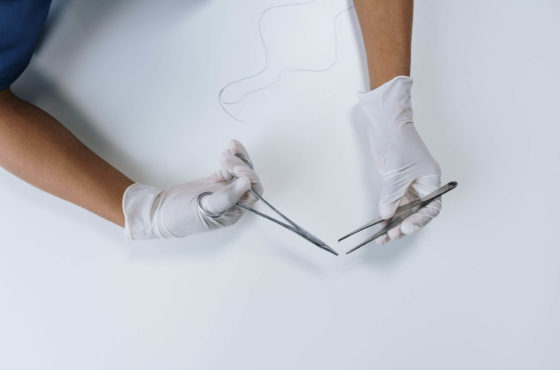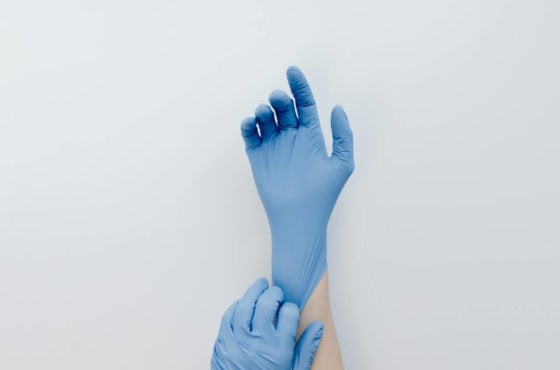Millions of surgeries are performed worldwide each year, and yet the most popular options in closing surgical incisions or wounds are either staples or stitches.
Years ago, however, when surgical stapling devices were not yet around, the dilemma of choosing which tool to use for wound closure didn’t really exist.
And even though lately, doctors have been relying more on surgical staplers and staples instead of stitches, the number of surgical stapling-related incidents due to malfunctions may be a cause for concern.
In fact:
Thousands of adverse reports made in relation to surgical stapler malfunctions already gave rise to several surgical stapler lawsuits being filed in the United States. Despite this, why do doctors still prefer using staples instead of stitches?
It might be easier to think that they would just rather have the easier way of doing things, but there may also be other reasons for this preference. That, even with the controversy surrounding those medical devices.
Read on to learn more about the comparisons between staples and stitches, and why doctors may choose staples over stitches for wound closure.
Staples vs. Stitches: Advantages and Disadvantages
If you’ve had an injury, you may wonder if it would require stitches or staples. And although this may mainly depend on the doctor’s preference, there are also other factors that may affect their choice.
Whatever this final decision may be, one thing stays true: you should take care of your wound until you can get professional help.
With that said, let’s have a look at some of the pros and cons of staples and stitches or sutures.
Staples
Surgical staplers and staples are far from your ordinary office staples. They are medical devices used in surgery to close large wounds or incisions that may be too complex for traditional stitches to close.
Often made of titanium or stainless steel, staples can also be made from materials like chromium, nickel, iron, or plastic. Staples may also be used on the abdomen, arms, legs, scalp, or back.
Today, more and more surgeons rely on surgical staples as alternatives to sutures. Below may be the reasons why.
Advantages
- Easy to place
- Can provide a quick fix in emergency situations
- Quicker wound closure with minimal inflammation
- Three to fourfold reduction in time for skin closure
Although the use of surgical staplers and staples in surgery offers a few advantages, it also has its drawbacks.
Disadvantages
- More costly for patients
- Requires a special tool for removal
- Requires the use of two healthcare professionals — one to align the skin using forceps, and one to apply the staples
- Can cause more scarring
- It is harder to align the edges of a wound for stapling
- Research has found that its use is more likely to lead to infection
The abovementioned research analyzed the findings of six trials that compared the use of staples from the use of sutures in orthopedic surgeries in over 680 adults.
The researchers’ conclusion?
There was a threefold increased risk of developing a superficial wound infection after staple closure than suture closure. On the other hand, for hip surgery, in particular, staple use was four times more likely to result in infection.
Upon removal, staples should only be removed by medical professionals on schedule so that healthy tissue doesn’t grow over the staple.
Stitches or Sutures
Stitches or sutures are nylon, silk, or polypropylene threads used to sew a wound closed. Stitches may be used for open wounds including cuts or lacerations, surgical incisions or wounds, punctures, and abrasions, among others.
In some cases, a surgeon may use absorbable stitches to close more complex, multi-layer wounds since they are buried in a deeper tissue level. The body breaks down absorbable stitches over time.
Stitches or sutures are often derived from synthetic materials or processed animal products. The use of stitches in surgery also offers some advantages.
Advantages
- Supports and strengthens wounds until healing
- Discourages infection
- Less scarring
- Better approximation of the wound edges that allows the skin and other tissues to fuse back together
- Minimal bleeding
- Only requires a pair of scissors for removal
- Only one healthcare professional is needed to close a surgical wound using stitches
- With the use of nonabsorbable sutures, no foreign body is left inside the patient
Perhaps the last advantage listed above is also the main advantage that the use of nonabsorbable sutures has over staples. A foreign object inside the body is one of the many concerns with staples, as some people may respond differently to having a foreign body inside them. In rare cases, others can also be allergic to surgical staples.
While the use of stitches comes with several advantages, it also has a few downsides.
Disadvantages
- A suture should provide support to tissue as long as necessary
- Risk of wound dehiscence or wound reopening
- Not suitable for more complex types of wounds
Nonabsorbable stitches should be removed by a healthcare professional. The amount of time these stitches should remain in place may depend on the type of wound. Dissolvable sutures, on the other hand, do not need to be removed as they are designed to be absorbed by the body over time.
Other Methods of Wound Closure
Steristrips
Steristrips are thin adhesive bandages used by surgeons to “tape” a wound closed. They are typically used as a backup for dissolvable stitches or after regular stitches are removed.
They are also used on shallow wounds or incisions that aren’t too severe. If a surgeon applied steristrips to your wound, then you can wear them until they fall off. It is also important to communicate to your doctor or surgeon any issues you may have with adhesive prior to your surgery.
Surgical Glue
Also called tissue adhesive or liquid stitches, doctors use surgical glue to close small incisions that do not need to be held in place with an enormous amount of strength in order to heal.
Some of its known disadvantages are that it is more expensive than sutures and some people may also be allergic to it. In some cases, the glue can’t be used in people who have conditions that increase their risk for slow wound healing, like diabetes patients, among others.
Zipper
An alternative to conventional sutures, the zipper is a non-invasive skin closure device used for incisions and lacerations that need to be monitored by a doctor regularly.
It is a small, adhesive device that is placed on either side of the wound and cut to its right size after surgery. When the four miniature straps on the device are pulled, it will close the break in the skin.
Because it is small and light and studies show that it is painless to remove, this device may be ideal for kids or for those who engage in outdoor activities where minor injuries are possible, including hiking, cycling, or camping.
Risks and Injuries Associated with Surgical Staplers
According to the U.S. Food and Drug Administration (FDA)’s Manufacturer and User Facility Device Experience (MAUDE) database, between 2011 and 2018, they received 41,000 adverse event reports related to the use of surgical staplers and staples. These reports included:
- 32,000 reports of surgical staplers malfunctioning
- 9,000 serious injuries
- 366 deaths
But do you know what’s even more shocking?
Those reports did not include 56,000 reports submitted to the FDA during the same period of time. The existence of a hidden database where these reports were kept was only revealed by Kaiser Health News through an investigative report.
As a result, the FDA announced that it will be reviewing the safety of these medical devices. However, the huge amount of adverse event reports related to surgical staplers and staples only show that they have a unique ability to harm a patient once they malfunction.
When staplers fail to fire or seal a tissue, patients can suffer from complications, including infections, massive bleeding, organ damage, fistula formation, and even death.
But the good thing about the law is that it offers us a way to use our rights to fight back when we are harmed by these devices and hold their manufacturers accountable through litigation.
If you or a loved one suffered from injuries due to a defective surgical stapler, you may qualify to file a surgical stapler lawsuit and be able to receive compensation.



